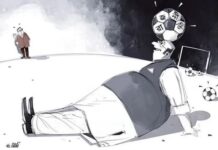 My Bangla journey
My Bangla journey
 Catherine Masud. Photo: Kabir Hossain
Catherine Masud. Photo: Kabir Hossain
I arrived in Bangladesh for the first time one September day in 1986. I had just graduated from college with a degree in development economics and intended to spend a year working in Bangladesh and conducting my own research before pursuing a graduate degree in a similar field. I didn’t know much about Bangladesh at the time. In fact the main geographic focus of my university studies had been Latin America. But I had received an interesting internship offer from an NGO in Dhaka, and my professor urged me to avail the opportunity. I did have an interesting family connection to the region however. In the 1930s my grandfather had traveled through what was then British India and had visited Shantiniketan where he had met with Rabindranath Tagore. I had heard some of my grandfather’s stories of those travels and was fascinated to know more.
In the weeks leading up to my first trip to Bangladesh, I tried to collect whatever Bangla language books I could find in the US and studied on my own. Still, after I stepped off the plane in Dhaka I was unable to understand a single word of the language that was spoken around me. I did have the experience of learning two other languages, French and Spanish, and that gave me courage. As I settled into life in Dhaka I continued to study whatever language books I could collect from the book stalls of New Market. I remember one such book by Brother James, “Bengali for Foreigners,” that was quite helpful. But I could find very few people to practice spoken Bangla with. Most of the middle class people I came in contact with wanted to practice their English on me. Or perhaps they just lost patience with my broken Bangla. So I turned to another class of people who would tolerate my rudimentary Bangla because they had no other option – the bouas, darwans, and rickshawalas. In this way, after a few months, I began to learn the language, or at least, one version of it. I quickly picked up a lot of slang, and even some very “bad” words, but often I was unaware of it. I learned this the hard way, when upon my trying to show off a new word or phrase to some of my more “bhodro” friends, they would suddenly burst out laughing, or worse, gasp in shock.
As my understanding of the language began to take shape, I can remember the excitement of picking out a word here, a phrase there, amidst the stream of Bangla being spoken around me. These glimmered like tiny points of light, pinholes through which I could begin to see beyond the obscuring veil that separated me from the surrounding Bangla-speaking world. Later I could decipher whole sentences and began to form my own. In this way I traveled from infancy to early adulthood in my journey as a Bangla speaker. In many ways it was a form of rebirth.
By the time I met Tareque I had already been living in Bangladesh for almost a year. Although by then I could carry on a conversation, my Bangla skills were still very uneven, and Tareque often teased me about my “rastar Bangla.” At this point I had acquired a more intellectual circle of friends and acquaintances, including the poet Ahmed Sofa, and so my vocabulary began to reflect two extremes: the “high Bangla” of literature and poetry on the one side with the “low Bangla” of the street on the other. Tareque introduced me to the poetry of Jibanananda Das, and I learned to recite “Banalata Sen” from memory. And of course, Rabindranath’s presence permeated the language everywhere around me, in the form of songs, poetry, quotations, and recitations. I was a sponge; I tried to soak it all in.
Over time I learned the “middle Bangla” of everyday life as well, the various gaps in my knowledge of the language filling in by degrees over the years. There was the formal Bangla of public speeches, the polite Bangla of certain social situations, the working Bangla of our filmmaking lives, the dialect Bangla of places like Faridpur and Mymensingh and Cumilla; even the Bangla of Kolkata became a distinct and familiar language to me. So there were many Banglas, not only one, that I had to learn over the course of time. And although I never had any formal training in the language, I did eventually also learn how to read and, less effectively, to write as well.
My journey of Bangla language learning, that had once started out by chance, became one that I was proud to own. Because Bangla also is a language that represents the love of all Mother Languages the world over. This should not be cause for chauvinistic pride in Bangla as a language superior to all others; rather, the knowledge of the beauty of Bangla as a language for which so many fought and died should be a source of inspiration for us all to respect and honor the diversity of all language, as a window to the heart and soul of humanity.
* Catherine Masud is an acclaimed film maker.









